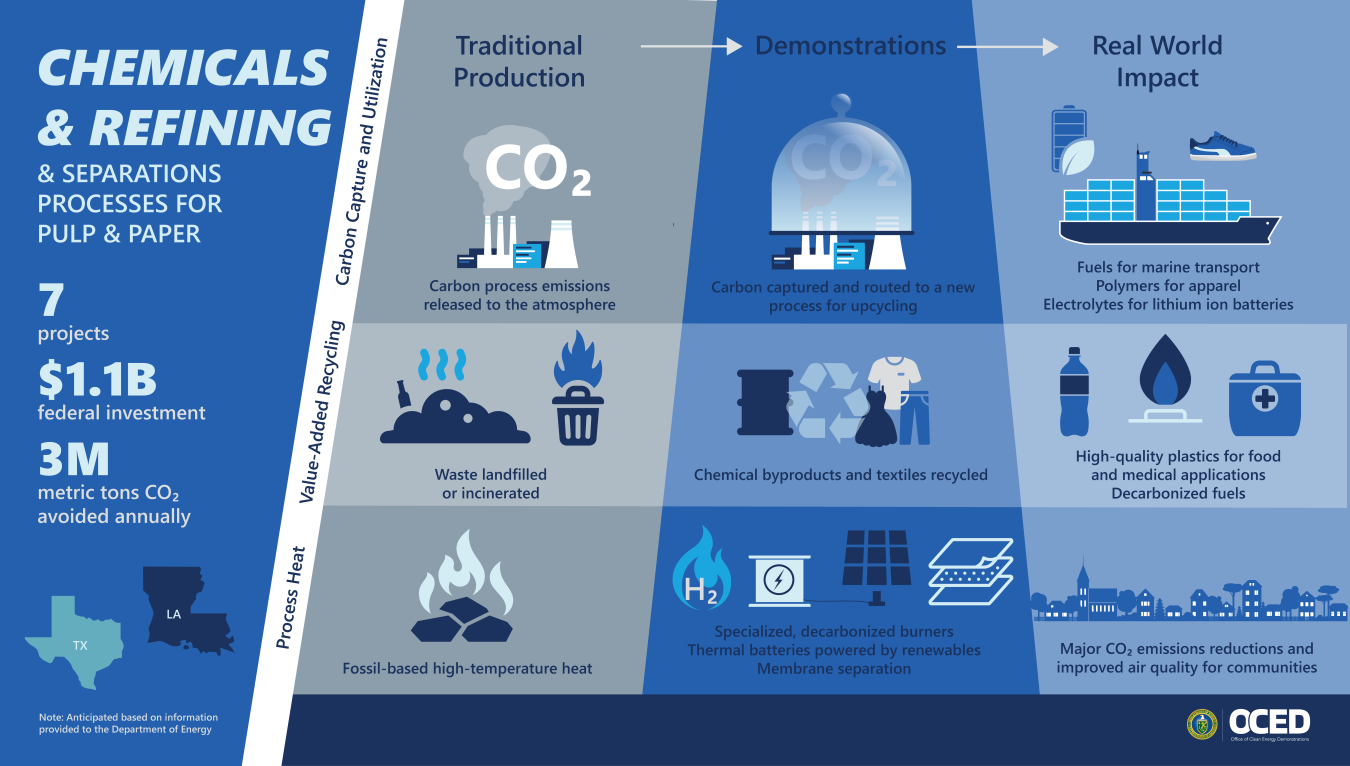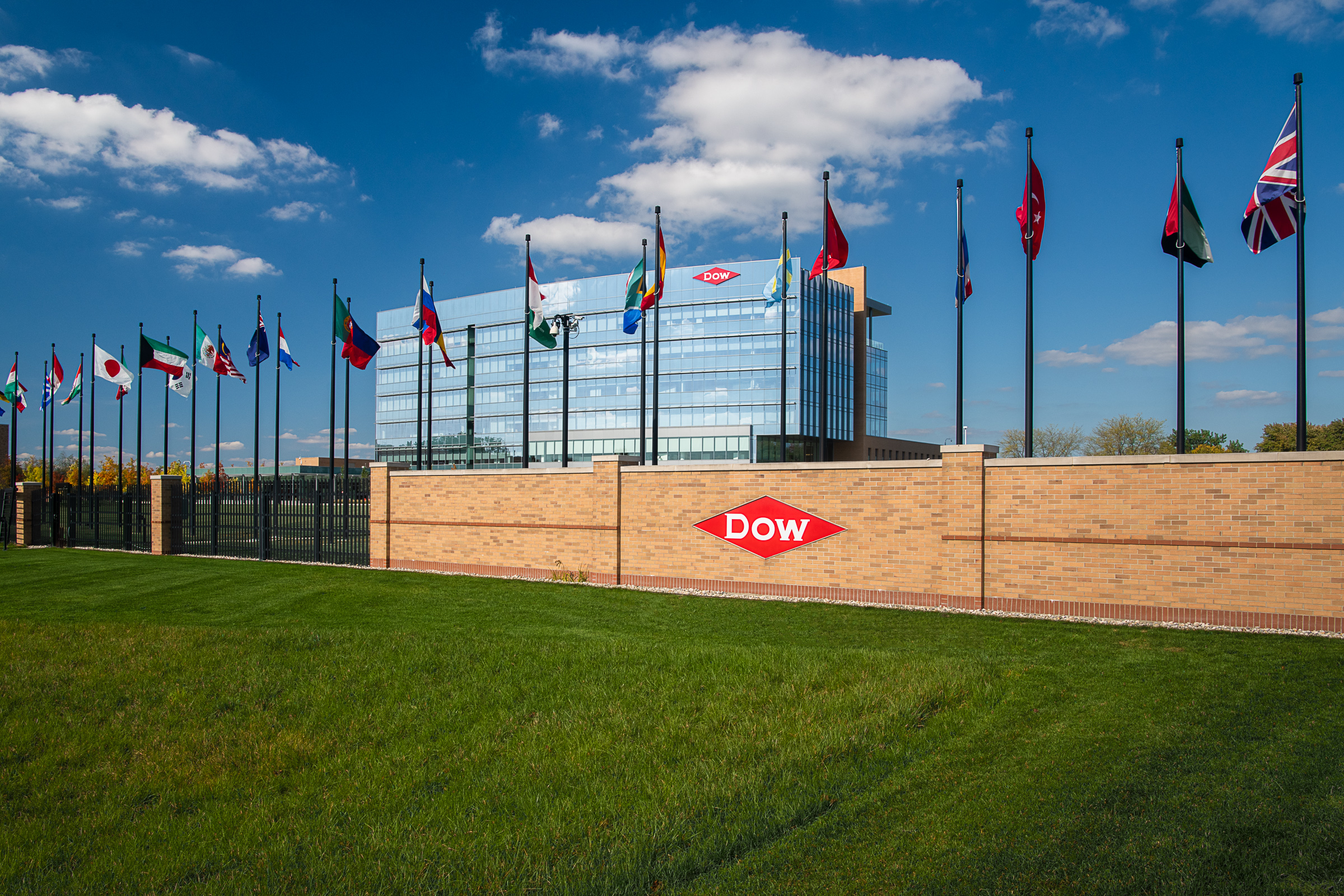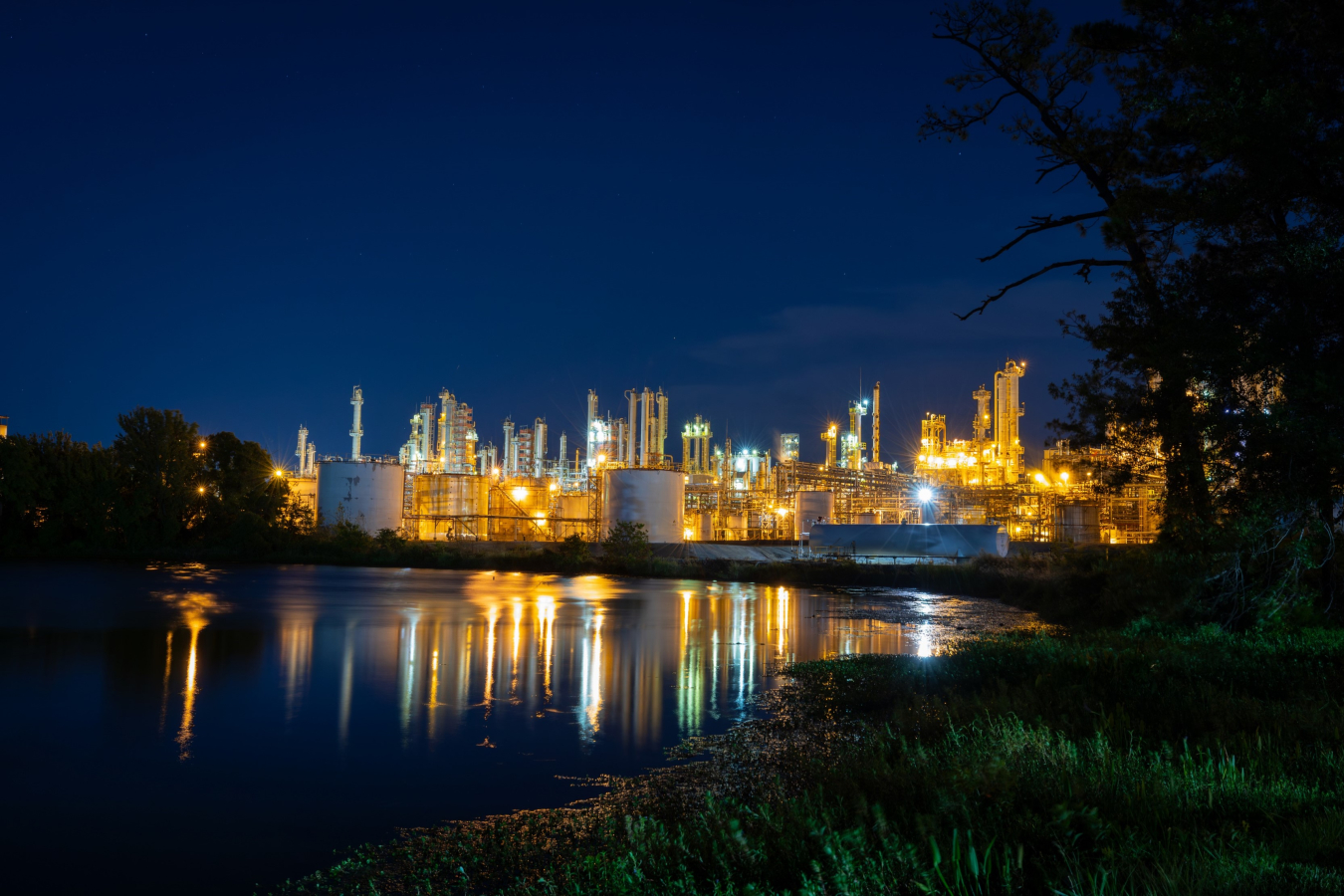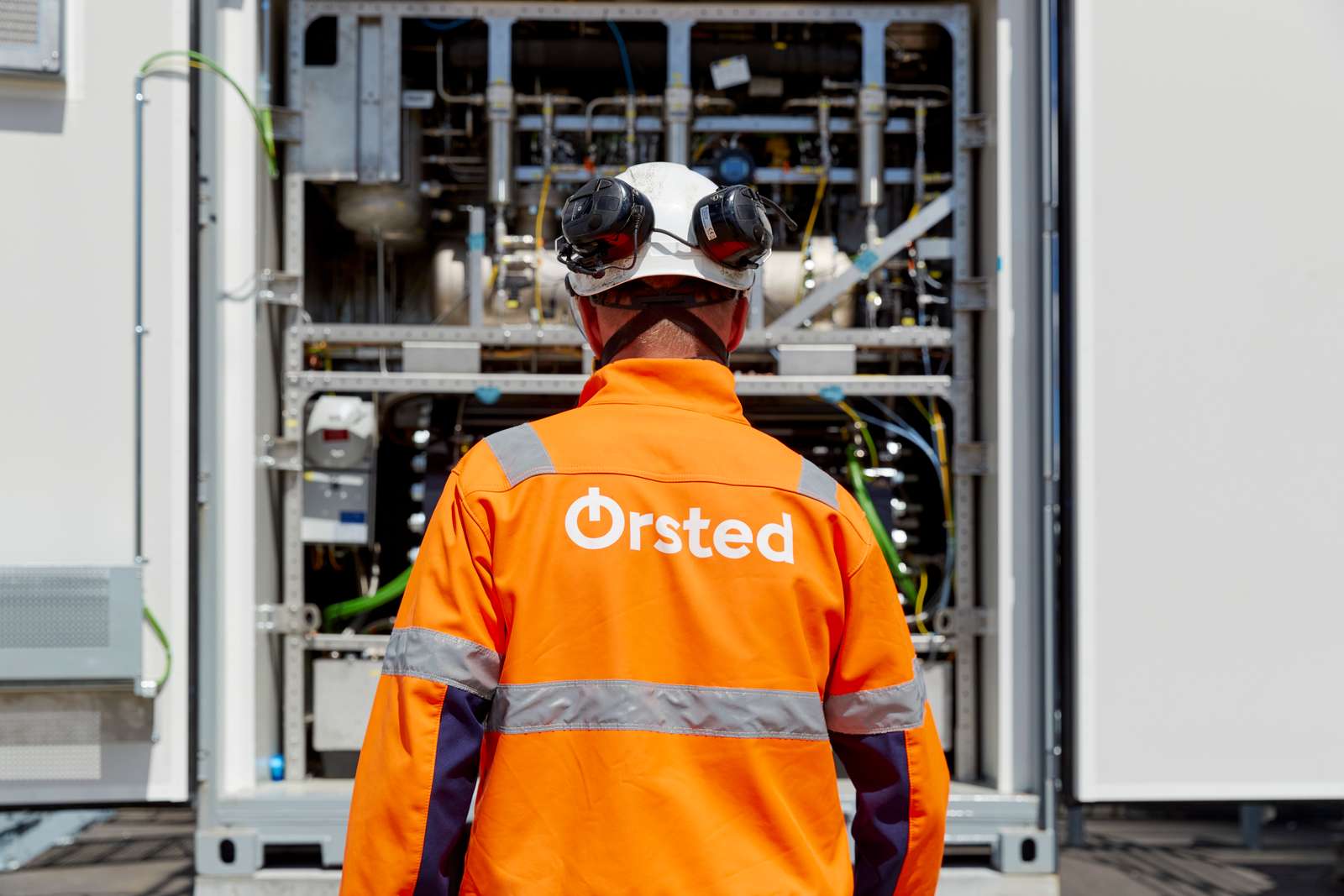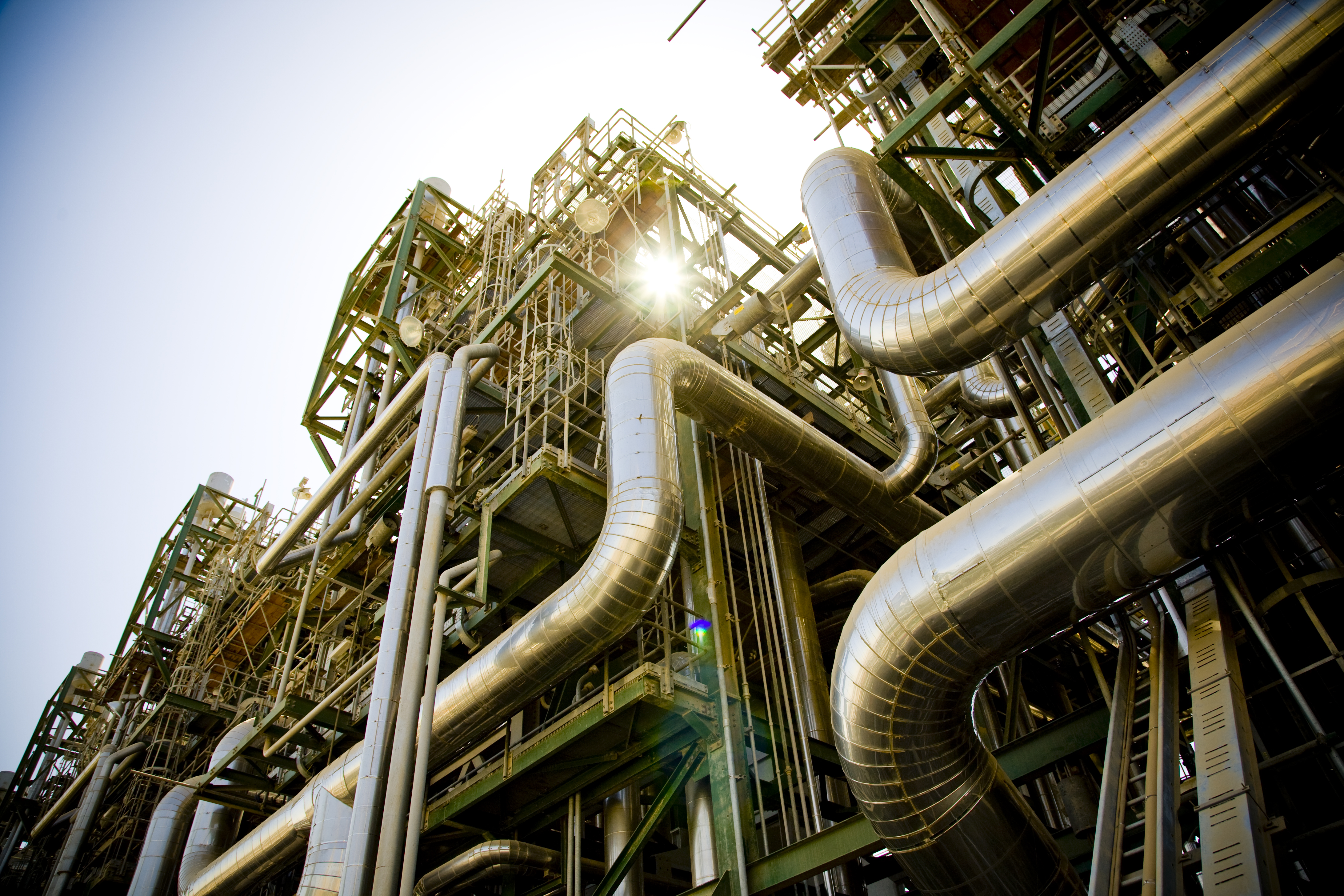Location: Baytown, TX
Federal Cost Share: Up to $331.9 million
Recipient: ExxonMobil
Project Summary
The Baytown Olefins Plant Carbon Reduction Project, led by ExxonMobil, would enable the use of hydrogen in place of natural gas across high heat-fired equipment using new burner technologies for ethylene production in Baytown, TX. Ethylene is a chemical feedstock used in the production of textiles, synthetic rubbers, and plastic resins, with applications in packaging, electronics, and vehicles. These equipment modifications would enable the use of up to 95% clean hydrogen fuel. At full implementation, the modifications would be expected to enable avoidance of an estimated 2.7 million metric tons of carbon emissions per year—equal to more than 50% of the olefin plant’s total emissions—and an estimated 200 tons per year of nitrogen oxide (NOx) emissions. Demonstrating clean hydrogen fuel switching in one of the largest ethylene plants in the U.S. would help de-risk viable decarbonization solutions for large, existing industrial facilities, prove the use of clean hydrogen in industrial processes, and provide a pathway for decarbonizing the chemical industry, which is responsible for more than one-third of the U.S. industrial sector’s carbon emissions.
Location: Longview, WA
Federal Cost Share: Up to $46.6 million
Selectee: Nippon Dynawave Packaging Co. LLC
Project Summary
In the Decarbonization of Black Liquor Concentration through Energy Efficient Membrane Separation project, Nippon Dynawave Packaging Co. LLC (NDP) and Via Separations (Via) are partnering to decarbonize a thermal process at NDP’s Longview, WA site. The project would use Via’s novel membrane-based technology, previously supported by the Advanced Research Projects Agency–Energy (ARPA-E). The installed membrane technology would enable a transformative energy efficiency improvement for industrial separations and would reduce 70% of carbon dioxide emissions per gallon of clean water removed during pulp production in this application. This project would not only reduce the facility’s process energy intensity but also demonstrate the viability of the membrane technology to potentially scale across all other domestic pulp and paper mills and other industrial sectors, such as chemical manufacturing.
Location: U.S. Gulf Coast
Federal Cost Share: Up to $95 million
Recipient: The Dow Chemical Company
Project Summary
The Novel CO2 Utilization for Electric Vehicle Battery Chemical Production project, led by The Dow Chemical Company (Dow), plans to design and construct a facility on the U.S. Gulf Coast with the intent to capture and utilize approximately 50% to 90% byproduct CO2 from a large-scale manufacturing process to produce essential components of electrolyte solutions needed for domestic lithium-ion batteries. This project would represent a leading U.S. demonstration to capture and utilize CO2 from upstream material manufacturing. This project would also provide supply chain resilience by establishing a domestic manufacturing base for the rapidly expanding U.S. electric vehicle and power storage markets, which are critical pieces of the energy transition.
Location: Longview, TX
Federal Cost Share: Up to $375 million
Recipient: Eastman Chemical Company
Project Summary : The Polyethylene Terephthalate Recycling Decarbonization Project, led by Eastman Chemical Company (Eastman), plans to construct a first-of-a-kind plastic molecular recycling facility in Longview, Texas capable of taking products that are typically landfilled or incinerated, like polyester trays, colored and opaque bottles, and fabrics and turning them into virgin-quality polyethylene terephthalate (PET) with high material to material yield. PET is a high-demand material used in packaging, film, and fiber applications. The facility plans to use thermal energy storage combined with on-site solar power to decarbonize process heating operations, resulting in a product with 70% lower carbon intensity compared to fossil virgin PET. The thermal battery technology at this scale represents a cross-cutting opportunity to electrify and decarbonize high-temperature process heat across industry sectors, and Eastman’s decarbonized material is commanding a green premium among consumer facing brands.
Location: Texas Gulf Coast
Federal Cost Share: Up to $99 million
Recipient: Orsted Star P2X LLC
Project Summary
The Star e-Methanol project, led by Orsted Star P2X LLC (Ørsted), plans to use captured carbon dioxide from a local industrial facility to produce e-methanol and reduce greenhouse gas emissions from hard-to-electrify sectors like shipping. Ørsted’s facility is estimated to produce up to 300,000 metric tons of e-methanol per year and would reduce greenhouse gas emissions by 80% or more than compared to traditional production methods. This project expects to demonstrate both the supply and demand for clean hydrogen-derived alternative fuels for the marine shipping and transportation sector. These sectors currently rely on energy-intensive fossil-derived fuels to transport the world’s goods. Ørsted is also participating in the Gulf Coast Hydrogen Hub (HyVelocity), a separate OCED award under the Regional Clean Hydrogen Hubs program, to produce the hydrogen for the Star e-Methanol project.
Location: U.S. Gulf Coast
Federal Cost Share: Up to $200 million
Recipient: Technip Energies USA, Inc. (T.EN USA)
Project Summary
Technip Energies USA (T.EN USA), in partnership with LanzaTech Global, Inc. (LanzaTech), plans to demonstrate an integrated process to utilize captured carbon dioxide from ethylene production. This project aims to use a biotech-based recycling process and low-carbon intensity hydrogen to create sustainable ethanol and ethylene. LanzaTech’s Gas Fermentation technology, previously supported by DOE, can also be deployed in any industry with waste carbon, allowing other industries to capture and upcycle carbon-rich waste streams instead of emitting them to the atmosphere or needing to sequester them.
Location: Freeport, TX
Federal Cost Share: Up to $75 million
Recipient: BASF Corporation
Project Summary: The Syngas Production from Recycled Chemical Byproduct Streams project, led by BASF, plans to recycle liquid byproducts into syngas, which can be used as a low-carbon feedstock at BASF’s chemical manufacturing site in Freeport, TX. By using plasma gasification and renewable power, BASF expects to decrease carbon dioxide emissions associated with select incineration processes at BASF’s Freeport manufacturing site by at least 75%, enabling the uptake of a technology capable of recycling liquid byproducts into additional production feedstocks like syngas or hydrogen and supporting the transition toward a low-carbon and more circular chemical production.
Once a project has been selected, both DOE and the selectee have the right to withdraw from the agreement negotiations. Selected projects under this program that are no longer moving forward in negotiations for federal funding: ISP Chemicals, LLC an Ashland Company.


